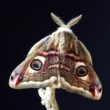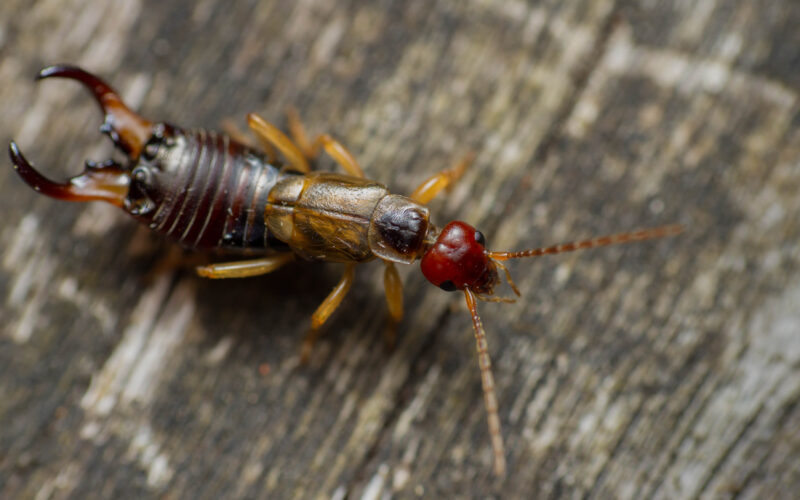Have you ever spotted a small, creepy-crawly insect with intimidating pincers scurrying across your bathroom floor? You’re likely dealing with earwigs, those nocturnal insects that often find their way into our homes seeking moisture and shelter.
While they have a frightening appearance and false reputation for crawling into people’s ears, earwigs are generally harmless to humans but can become a nuisance when they invade your living spaces in large numbers.
Earwigs, sometimes called pincher bugs, are most common in the southern and southwestern United States, though they can be found across the country.
You might notice them more during rainy seasons or in homes with excess moisture problems.
These insects are attracted to your home for three main reasons: moisture, food sources, and shelter.
They typically enter through small cracks in foundations, gaps around doors, or alongside potted plants brought in from outside.
Understanding why earwigs suddenly appear in your house is the first step toward effective control.
Poor drainage around your foundation, decaying plant material near your home, or even high humidity inside can create the perfect environment for these pests.
The good news is that with some simple prevention methods like sealing entry points, reducing moisture, and removing hiding places, you can keep these pincer-wielding insects outdoors where they actually benefit the ecosystem by consuming other garden pests.
European Earwig
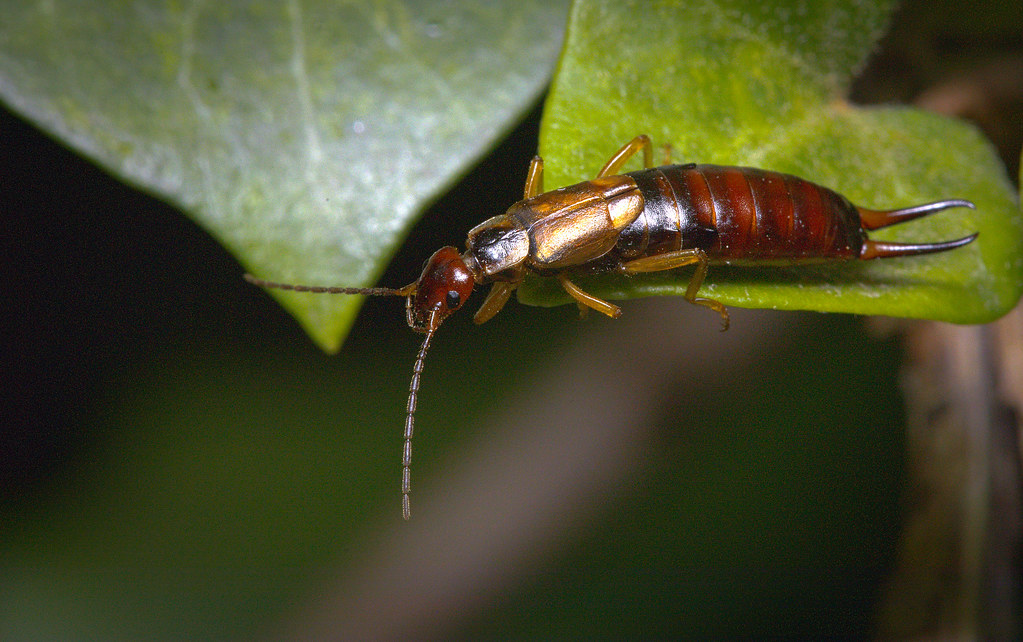
The European earwig (Forficula auricularia) is one of the most common household pests you might encounter. These reddish-brown insects are easily identified by their distinctive pincers (forceps) at the rear of their bodies, which are curved in males and straighter in females.
These creatures get their name from an old myth that they crawl into people’s ears while sleeping. Don’t worry – this isn’t true! The name actually comes from the shape of their hindwings, which resemble human ears when unfolded.
European earwigs are omnivorous insects that eat both plant material and other insects. They can be beneficial by eating aphids and other garden pests, but they may also damage your flowers and vegetables.
You’ll most likely spot these creatures in dark, moist environments around your home. They’re primarily nocturnal, hiding during the day and becoming active at night.
Common Hiding Places:
- Under flowerpots and garden debris
- In woodpiles and mulch
- Around door frames and window sills
- In bathrooms and kitchens
- Inside damp basements
If you find European earwigs inside your home, they’re typically just seeking shelter and aren’t harmful to humans. They don’t bite, sting, or spread diseases, though they can emit a foul odor when disturbed.
To prevent earwig problems, reduce moisture around your home’s foundation and seal entry points. You can also use insecticidal sprays labeled for earwig control around your home’s perimeter if infestations become problematic.
Lesser Earwig (Labia minor)
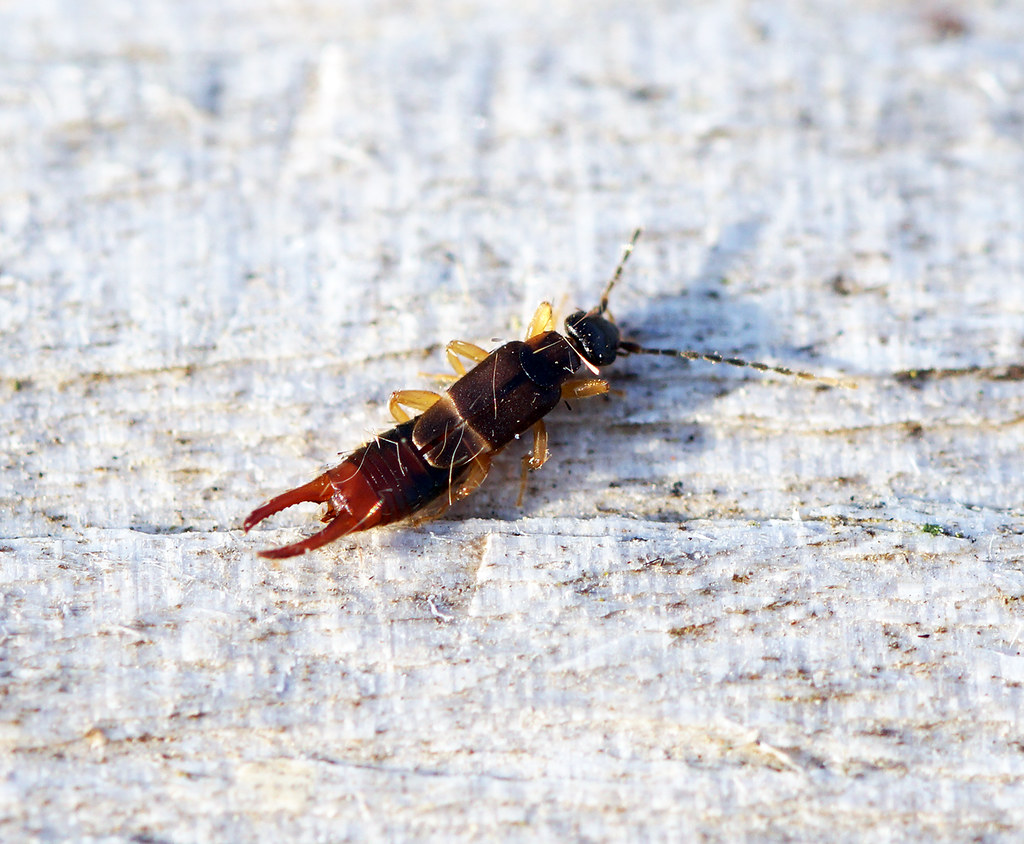
The Lesser Earwig is much smaller than its common cousin, measuring only 4-7 mm long including its pincers. This tiny insect has a chocolate brown color and can easily be mistaken for a baby common earwig.
You might find these insects in warm areas around your home, especially in compost heaps where they thrive. Unlike other earwig species, they generally don’t damage plants, though their presence can be unsettling.
The Lesser Earwig has been present in North America for a very long time. The first recorded sighting in the US dates back to around 1838, but experts believe they were present even before this documentation.
This species is quite hardy and adaptable. It ranges further north than any other earwig species, extending into British Columbia and Quebec in Canada.
Key Characteristics:
- Length: 4-7 mm (including pincers)
- Color: Chocolate brown
- Habitat: Prefers warm locations like compost
- Distribution: Widespread in temperate zones globally
If you spot these tiny earwigs in your home, remember they’re generally harmless. They’re often confused with young Common Earwigs, but their smaller size sets them apart.
In Britain and Ireland, the Lesser Earwig is one of the few earwig species commonly found in most regions, though it’s less frequently encountered than the Common Earwig.
Ring-Legged Earwig (Euborellia annulipes)
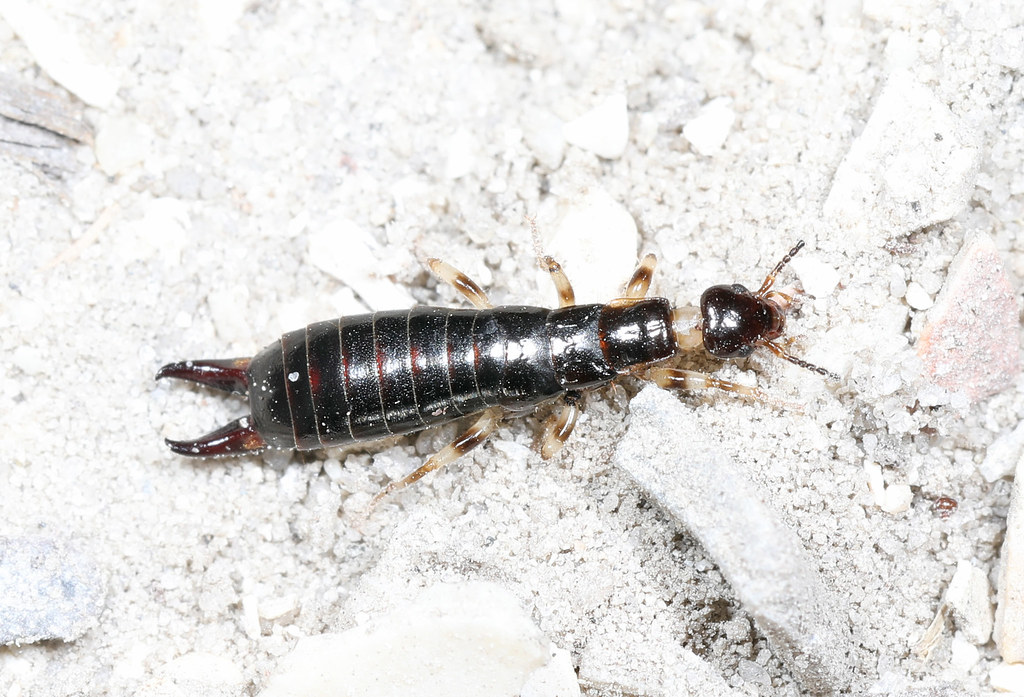
The Ring-legged Earwig is a common species you might spot around your home and garden. These earwigs are typically dark brown and measure between 10-25 mm (0.4-1.0 in) in length.
Unlike some earwigs, this species is completely wingless. You can easily identify them by their distinctive pale brown legs with noticeable dark bands around the middle of their femur or tibia—hence their common name.
Physical Characteristics:
- Color: Dark brown body with light brown legs
- Size: 10-25 mm (0.4-1.0 in)
- Wings: None
- Antennae: Generally 16 segments
- Special feature: Dark rings on legs
You’ll typically find these earwigs outdoors in gardens and fields. While they might occasionally wander into your home, especially when you bring outdoor plants inside during cold weather, they don’t reproduce indoors or create infestations.
Female Ring-legged Earwigs are usually larger than males, which is common among earwig species. Interestingly, about 75% of Ring-legged Earwig nymphs develop into females.
These earwigs display maternal care during the egg phase, though this behavior gradually stops during the nymph stage. Adults remain active year-round except during winter when they seek shelter underground.
If you find these earwigs in your home, don’t worry! They’re likely just lost and looking for a way back outside to their natural habitat.
Red-Legged Earwig (Euborellia annulipes)
The Red-legged earwig is a common household pest you might find lurking in damp areas of your home. Though not native to North America, these insects have become especially prevalent in the southern United States, particularly in Florida.
Unlike many other earwig species, Red-legged earwigs lack the distinctive leathery wings typically associated with earwigs. They are easily identified by their reddish-brown coloration and distinctive banded legs.
Physical Characteristics:
- Length: 1/2 to 3/4 inch
- Color: Reddish-brown body
- Distinctive feature: Banded or ringed legs
- No wings present
These nocturnal insects prefer moist environments and are commonly found in gardens and agricultural fields. They may enter your home seeking shelter, especially during hot, dry weather or excessive rainfall.
You’ll often find Red-legged earwigs hiding in:
- Piles of damp leaves
- Under stones or logs
- Within mulch in garden beds
- Around foundation cracks
While they might look intimidating with their rear pincers (cerci), Red-legged earwigs are generally harmless to humans. They primarily feed on decaying plant material and sometimes prey on other small insects.
To discourage these earwigs from entering your home, reduce moisture around your foundation and keep wood piles away from your house. Sealing cracks and removing debris near entrances can also help prevent infestations.
Tawny Earwig (Labidura truncata)
The Common Brown Earwig (Labidura truncata) is light brown with dark patches and a distinctive orange triangle behind its head. These earwigs can grow up to 3 cm long, making them quite noticeable when they appear in your home.
Unlike some pests, these earwigs can actually benefit your garden. They’re natural predators that feed on soft-bodied insects like caterpillars, helping to control garden pests naturally.
You might spot these earwigs in sandy areas around your property or in damp, sheltered locations in your garden. They’re sometimes confused with the shore earwig (Labidura riparia), which has similar characteristics.
If you want to attract these beneficial insects to your garden, consider creating suitable habitats:
- Provide damp, sheltered locations
- Maintain mulched areas
- Leave some plant debris for hiding spots
These earwigs are found throughout mainland Australia and Tasmania. You can identify them by their lighter coloration compared to most other earwigs, which tend to be darker brown.
While they may look intimidating with their rear forceps (cerci), tawny earwigs pose little threat to humans. The forceps are primarily used for defense and during mating, not for attacking people.
Shore Earwig (Labidura riparia)
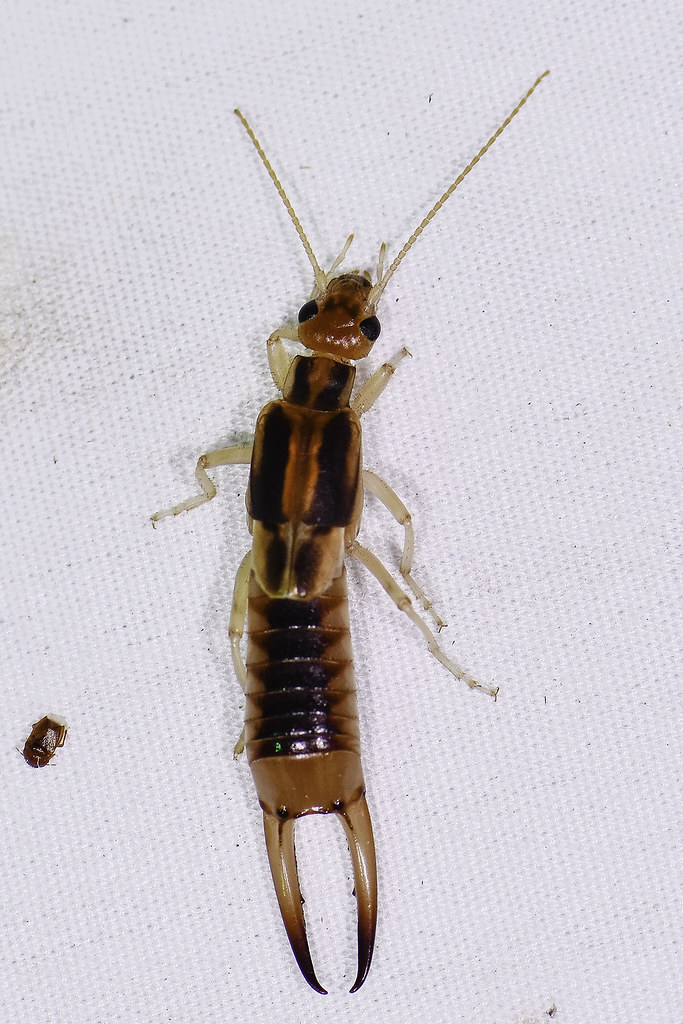
The shore earwig is a distinctive insect you might encounter around your home, especially if you live in tropical or subtropical areas. Also known as the tawny earwig, riparian earwig, or striped earwig, this species is easily identified by its light tan color and two dark longitudinal stripes running down its pronotum.
Unlike some pests, these earwigs can actually be beneficial around your property. They are predatory insects that help control other pest populations in your garden or yard.
Shore earwigs are larger than many common household earwigs, reaching between 10 to 25 mm in length. Their most notable feature is the modified cerci (rear appendages) that look like forceps, which they use for defense and mating displays.
You’ll likely find these striped earwigs in human-modified habitats around your home. Unlike the European earwig, the shore earwig is well-adapted to Florida’s climate and similar warm regions.
Physical Characteristics:
- Length: 10-25 mm
- Color: Brown to dark brown, sometimes glossy
- Distinctive feature: Two dark stripes down pronotum
- Forceps-like cerci (more curved in males)
If you spot these earwigs in your home, don’t panic. While they may look intimidating, they’re generally not harmful to humans. They prefer moist environments, so you’ll often find them in bathrooms, basements, or around your garden after rain.
Common Earwig (Forficula sp.)

The European earwig (Forficula auricularia) is the most common earwig species you’ll encounter around your home. These reddish-brown insects typically measure between 8-18mm (0.3-0.7 inches) long and are easily identified by their distinctive pincers at the rear end.
Despite old myths, earwigs won’t crawl into your ears! The name actually comes from their hindwings, which resemble a human ear when unfolded. While they can fly, they rarely do so.
Where to Find Them:
- Under stones and logs
- In damp, cool spots around homes
- Garden areas with decaying plant matter
- Crevices near kitchens and bathrooms
These nocturnal creatures spend their days hiding and become active at night. They’re scavengers that feed on dead plant and animal matter, though they may also damage living plants in your garden.
Female earwigs are surprisingly attentive mothers. They guard their eggs in damp crevices and clean them until hatching – unusual behavior for insects!
You might notice a foul odor when earwigs are present. This is their defensive mechanism when threatened. European earwigs can be quite destructive to both house and garden plants if their populations grow unchecked.
While generally harmless to humans, their presence in large numbers can be unsettling. Their pincers can pinch if handled, but they aren’t venomous or dangerous to your health.



